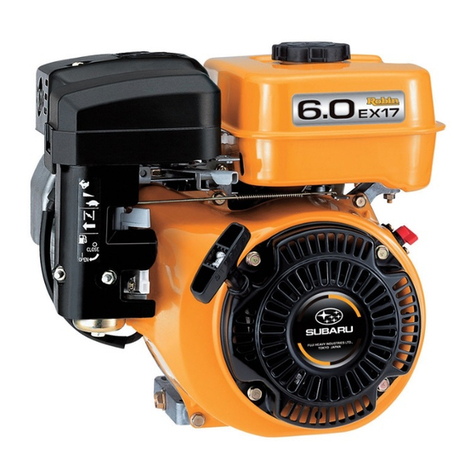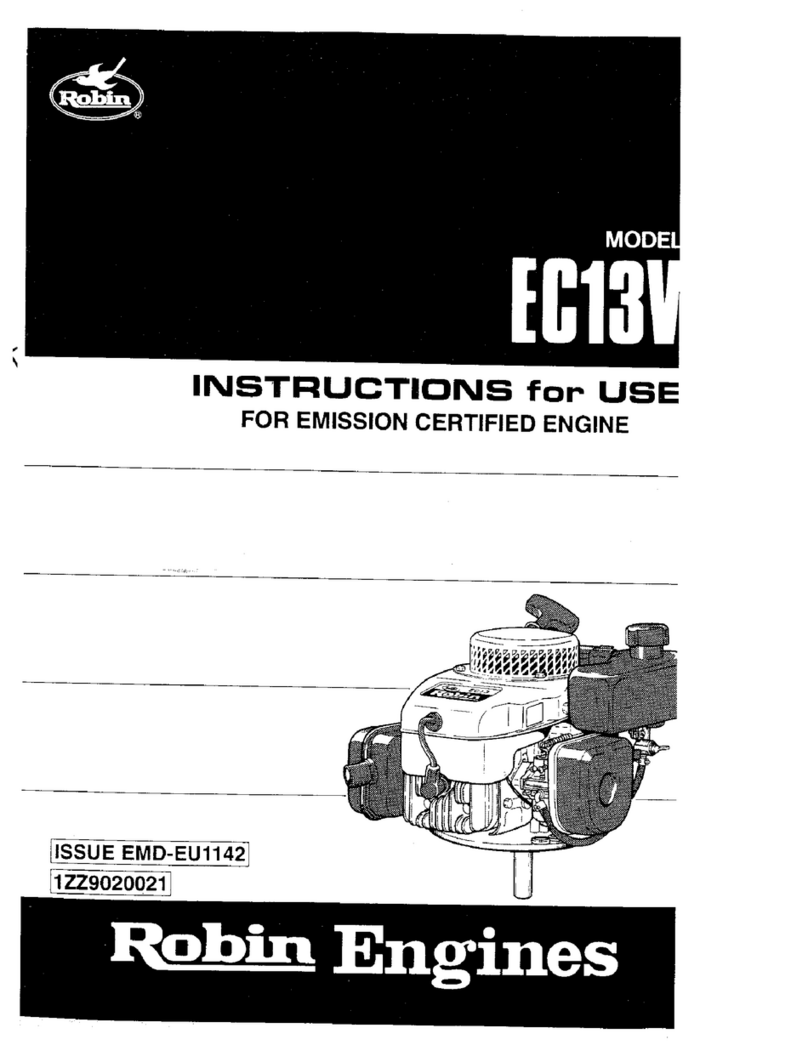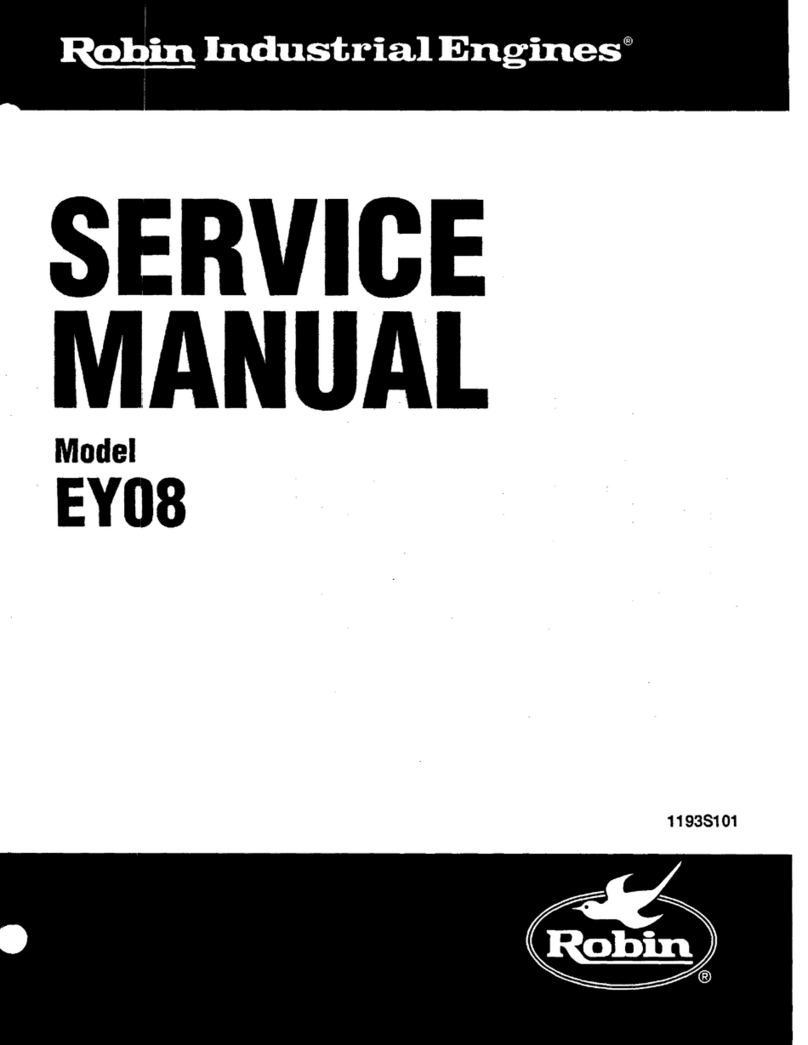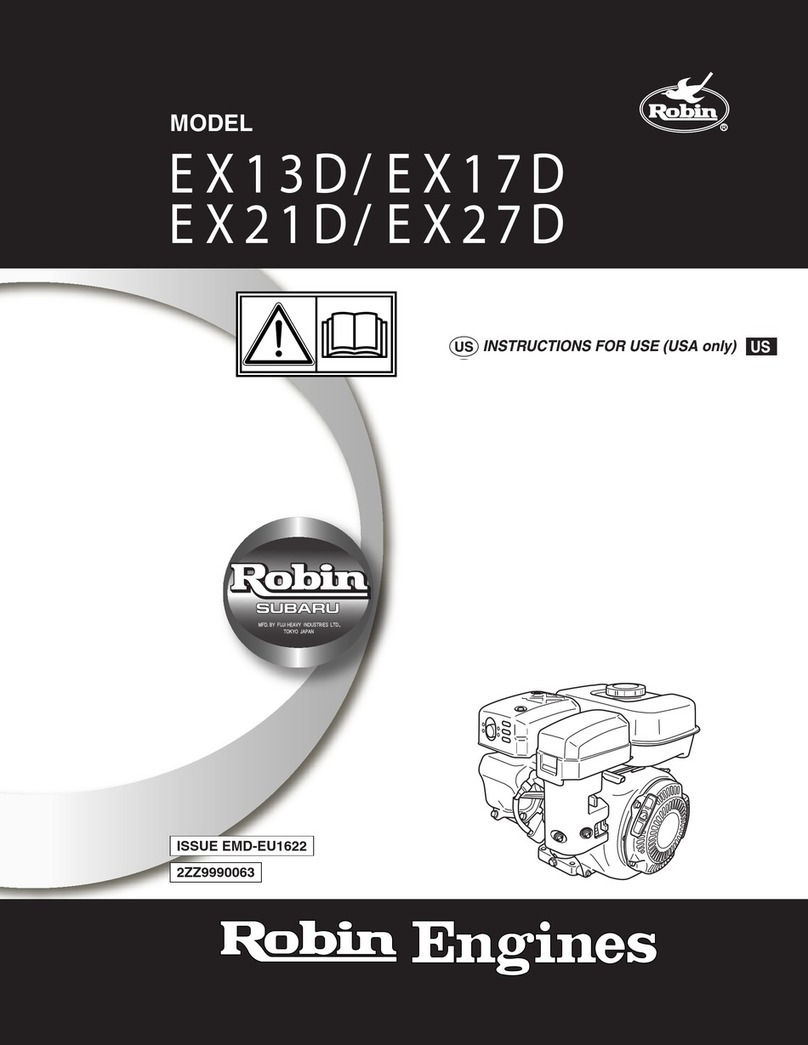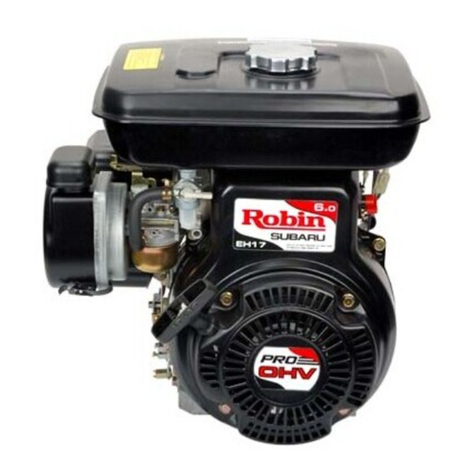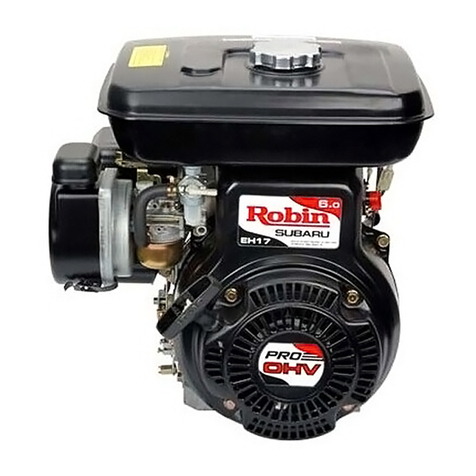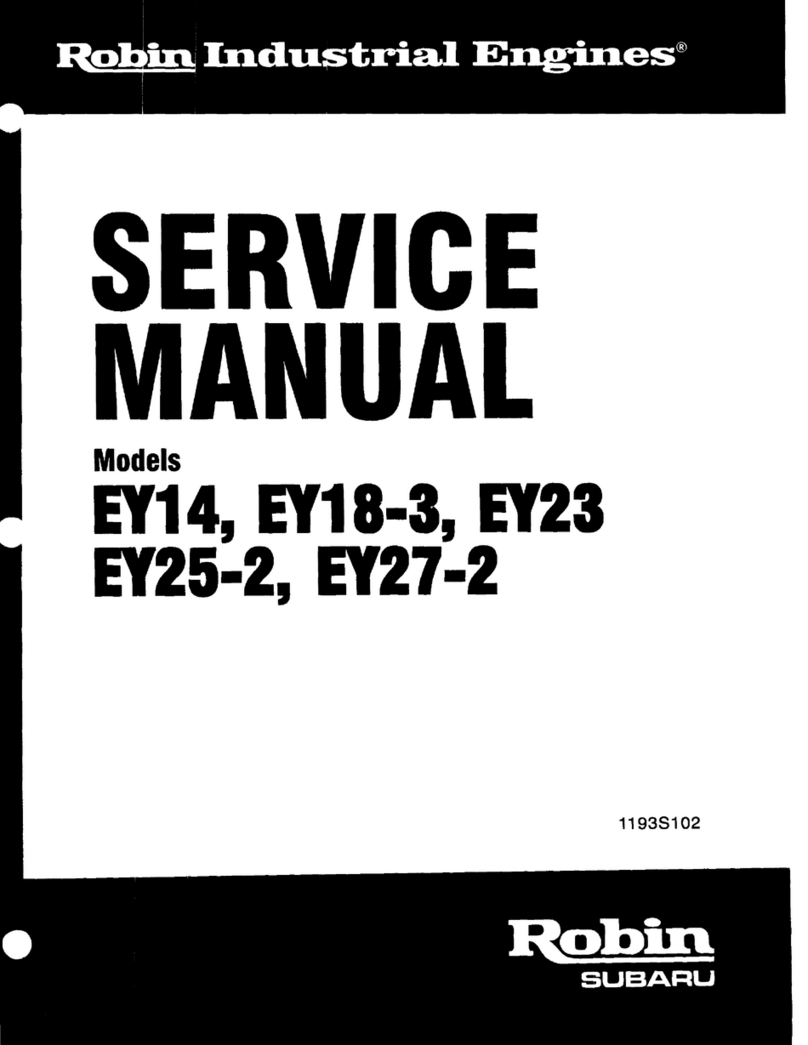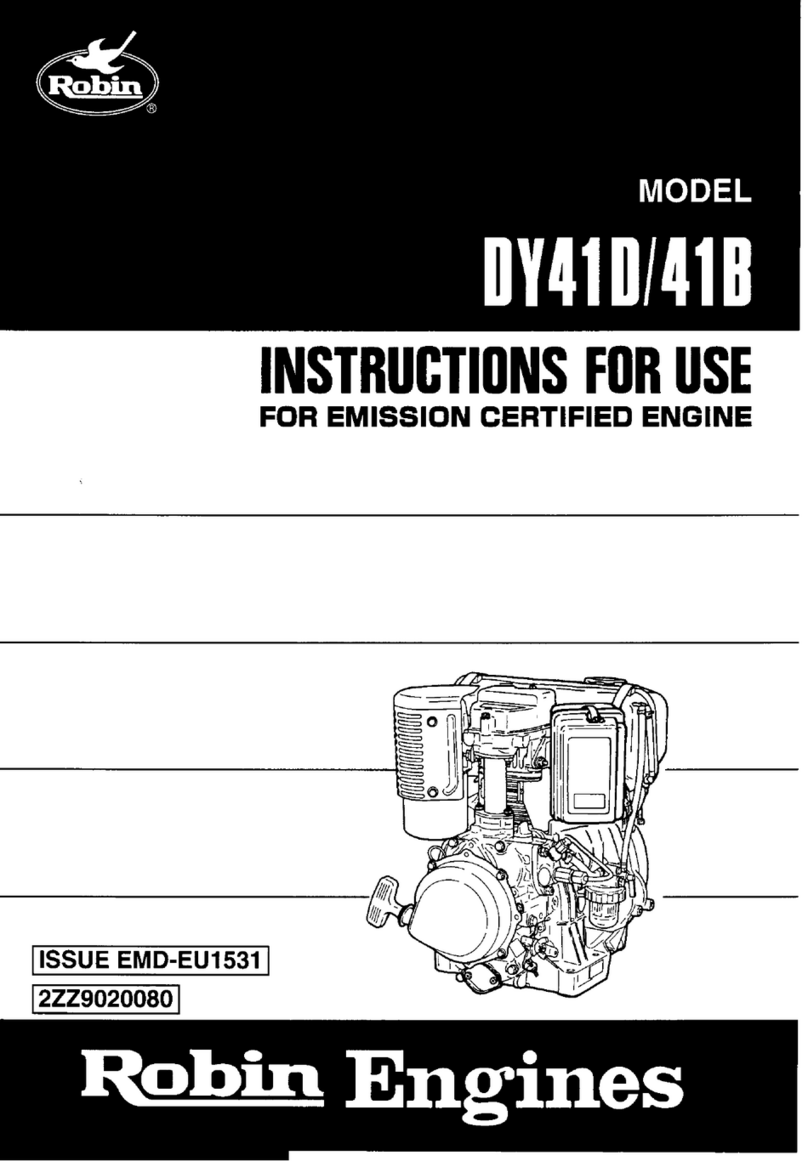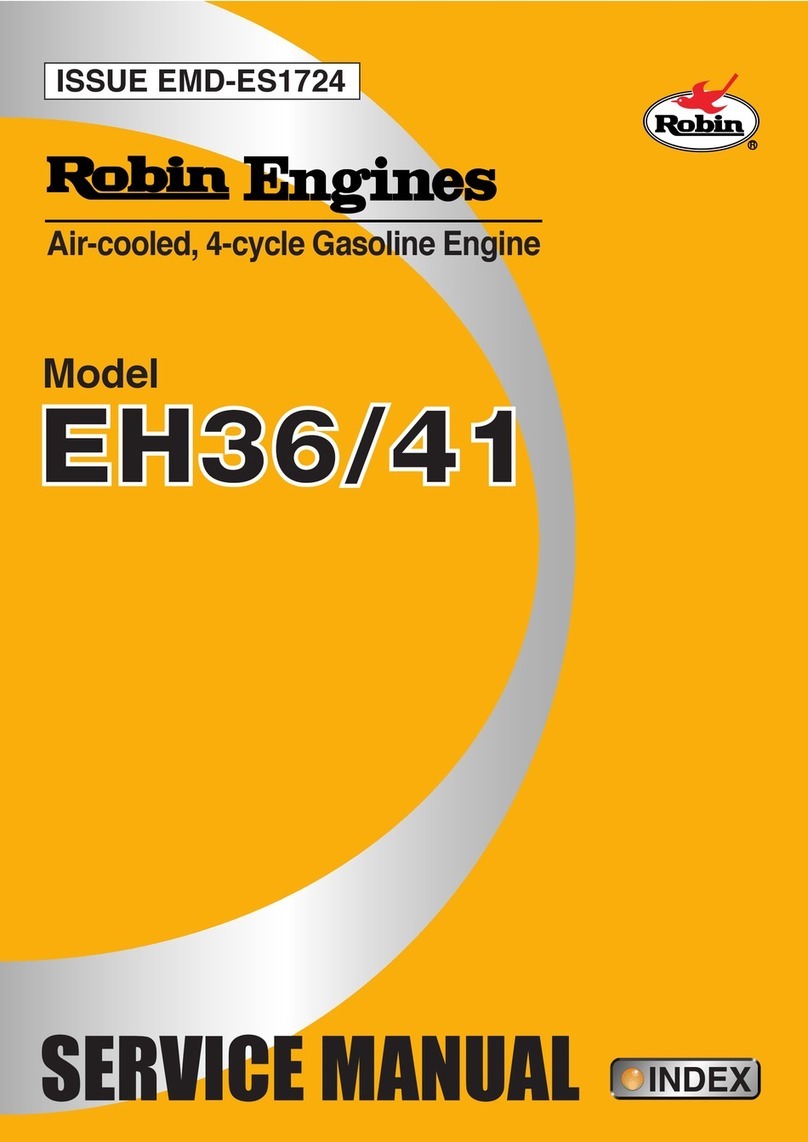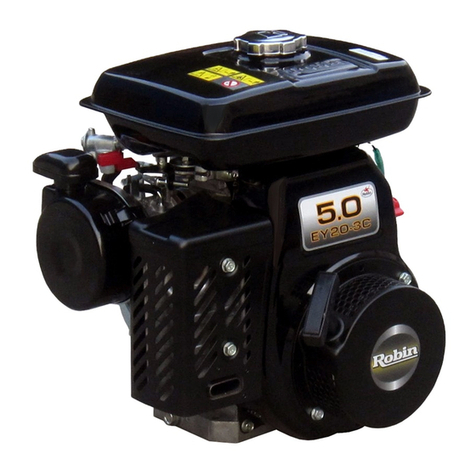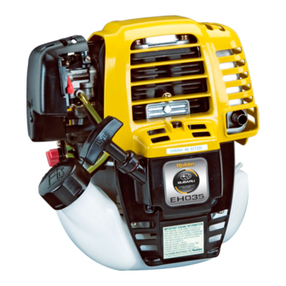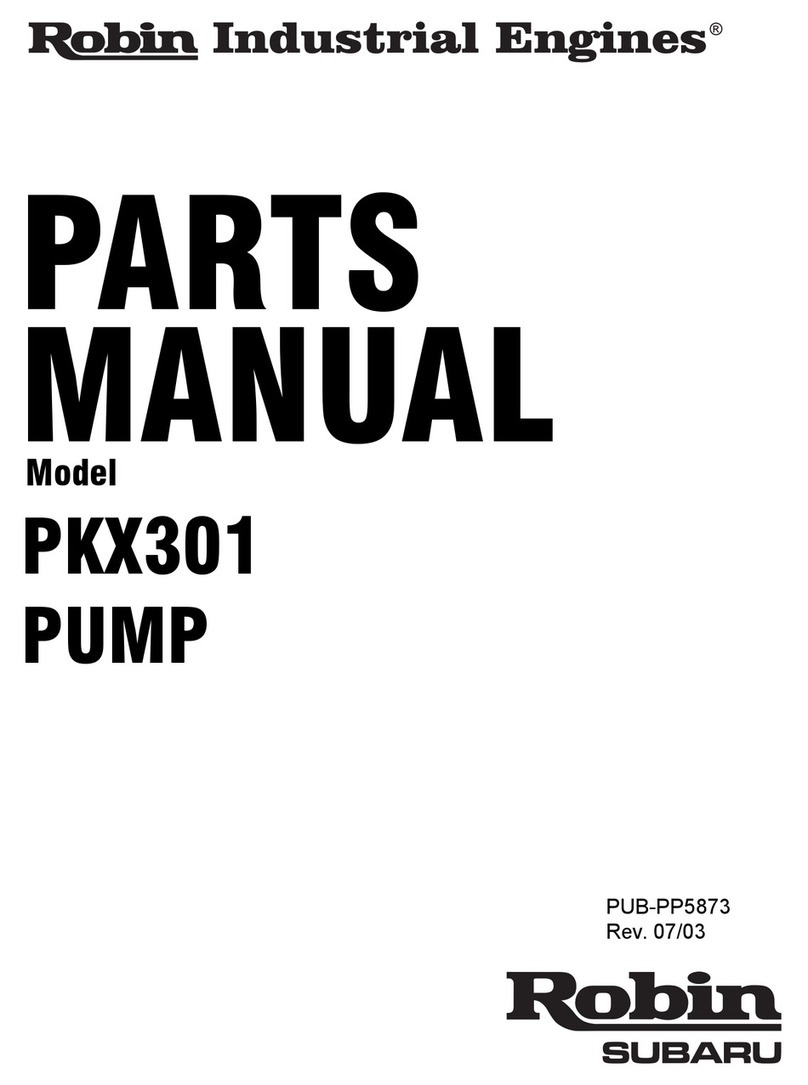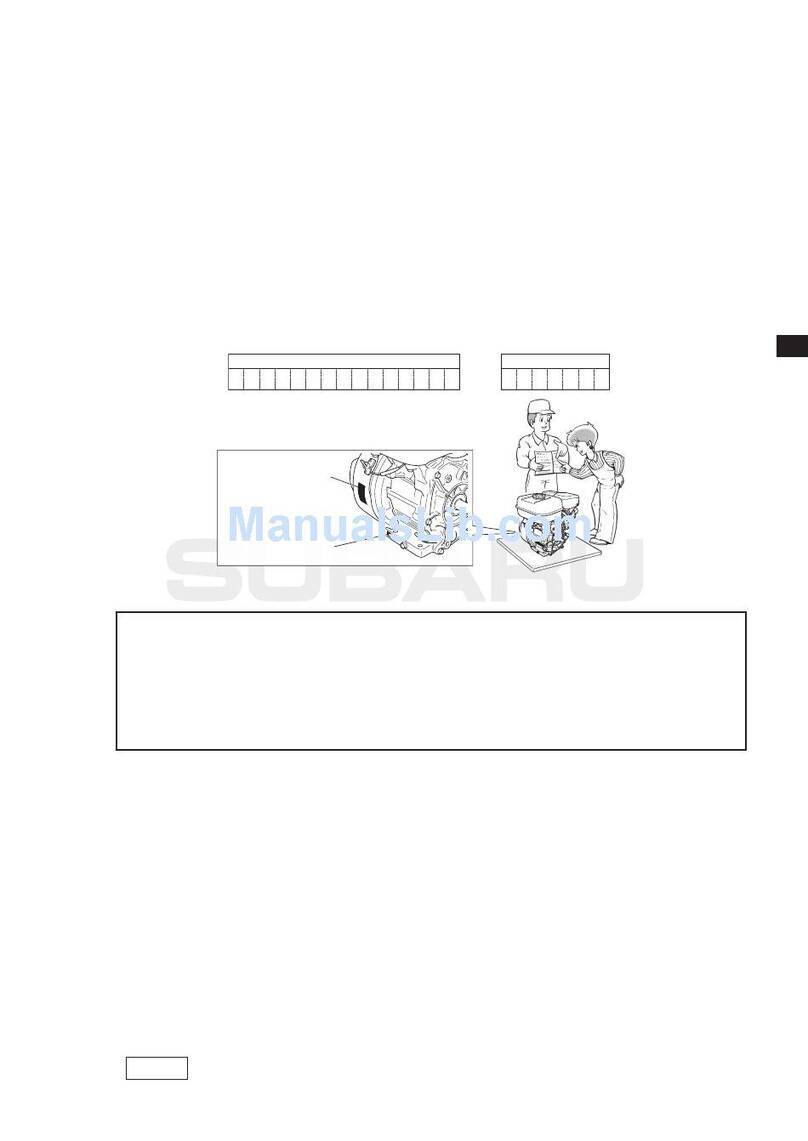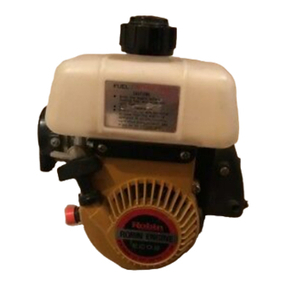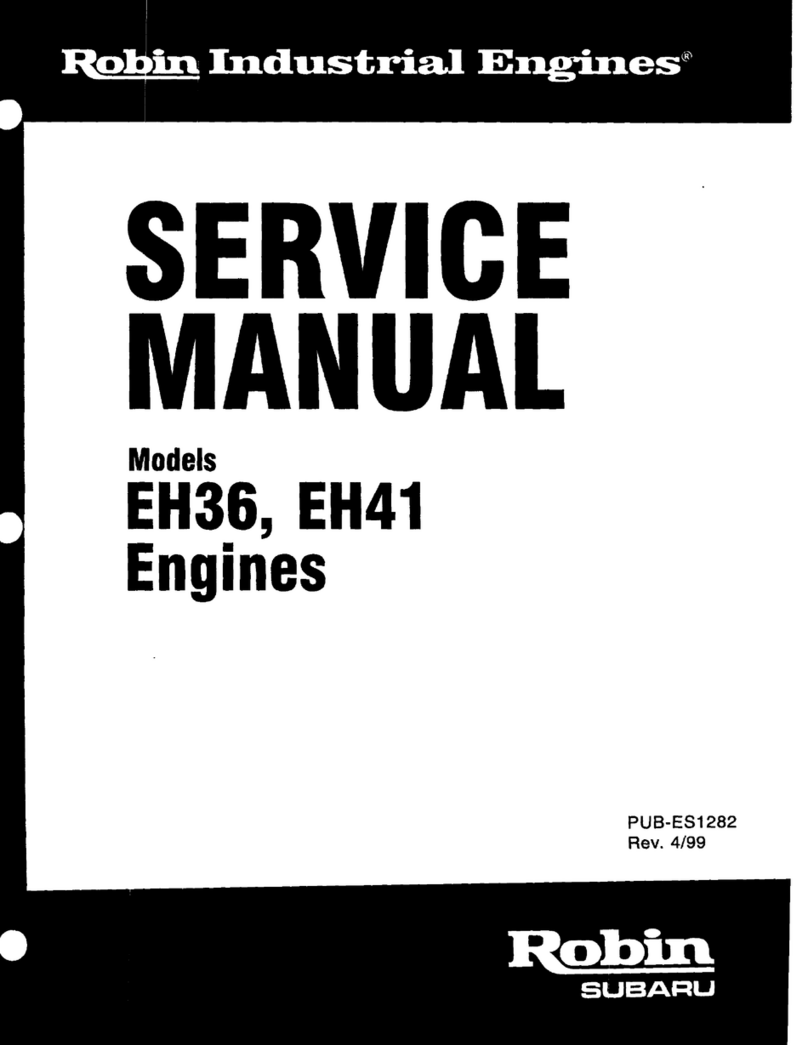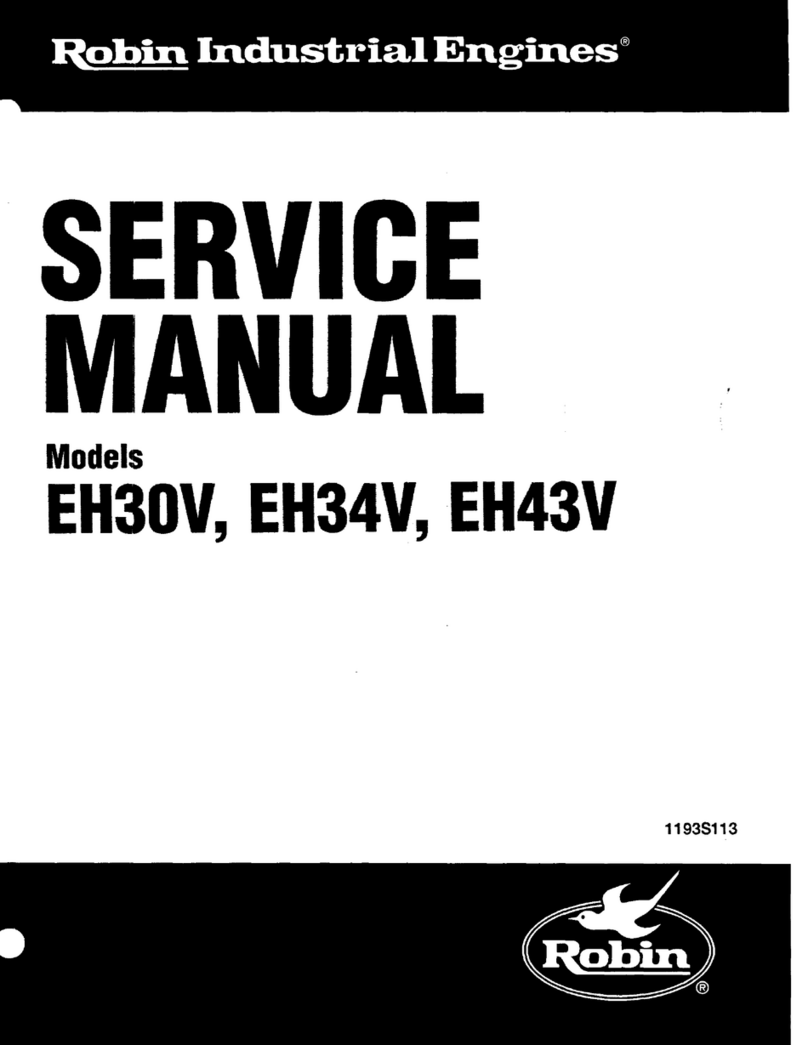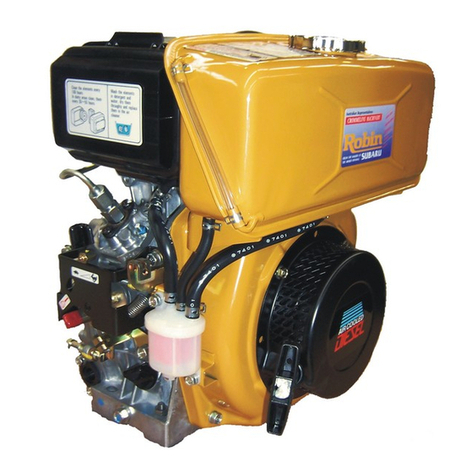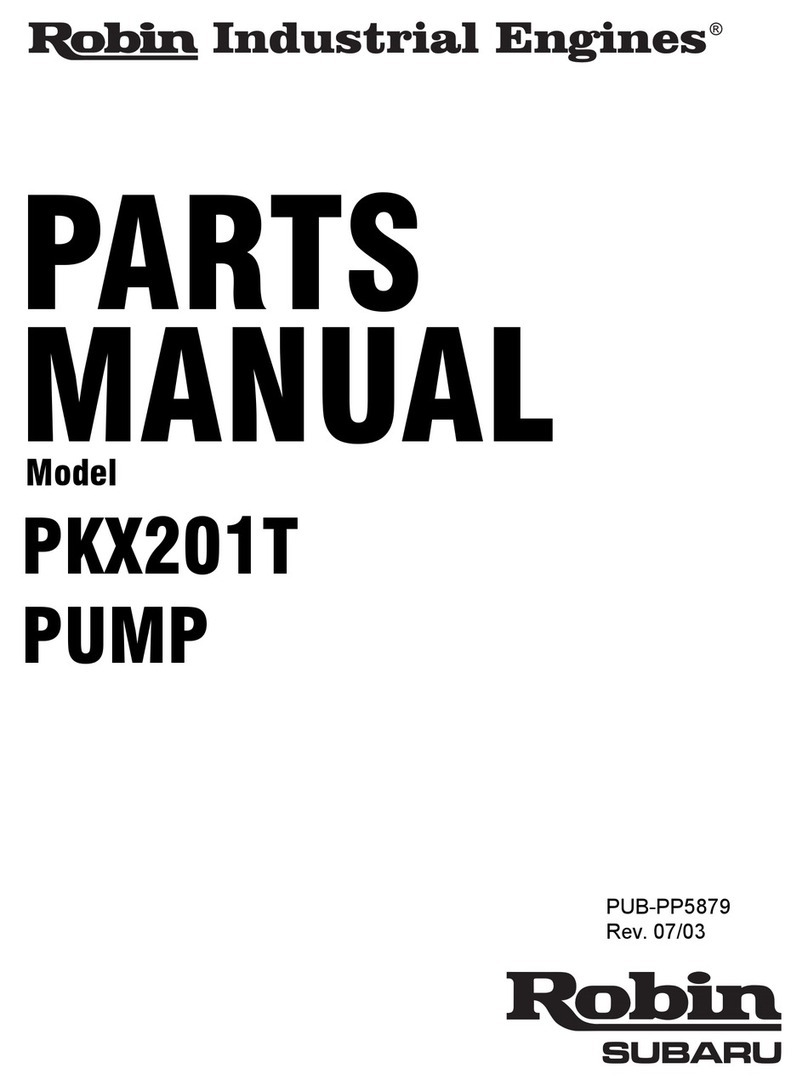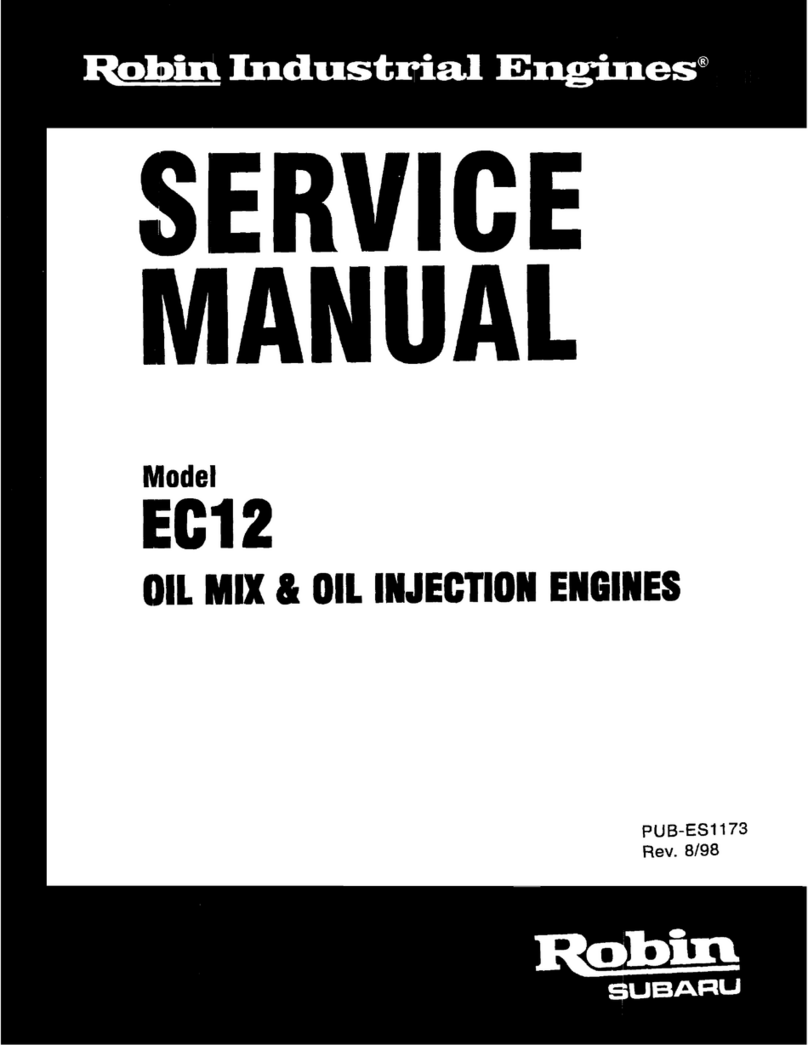GENERAL
INFORMATION
Wisconsin Robin
WO1-115,
150
and
210
engines
are of the four cycle type, inwhich each ofathefour
operations of suction, compression,expansion and
exhaust constitutes a complete stroke.This pro-
duces one power stroke for each
two
revolutionsof
the crankshaft.
These engines provide dependable service with
qualityandstrengthwherethey areneeded.
A
heavy
cast iron cylinder liner, forged steel crankshaft and
camshaft, forged alloy bearings andan aluminum
alloy connecting rod, alladd up to improved
durability.
MECHANICAL DECOMPRESSOR
Foreasy engine starting, a mechanical decom-
pressor is mountedon the camshaft to decreasethe
recoilpulley force. The decompressor opens the
exhaust valvebeforecompressionreachesthe max-
imum to reduce thecompression pressure,which in
turn decreases therecoil pulley force.
IGNITIONSYSTEM
A
pointless magneto ignitionsystem is standard on
these engines.Thissystem, referred to asT.I.C.
(Transistor Ignition Circuit), is completely free of
problemsassociated withbreakerpointtype ignition
systemssuch as start-up failuredueto dirty,burnt or
oxidized point surfaces, lowignitionefficiency
because
of
moisture, rough breaker point surface
and incorrecttimingresulting from worn me-
chanical parts.
A
Solid StateIgnition System is anavailable op-
tion.
LUBRICATION
An oilscraper
on
theconnectingrodcap splashesoil
in the crankcase on the rotating and sliding parts.
COOLING
Cooling is accomplished by a flow of air circulated
pastthe cylinder wallsandheadfinsfrom acombina-
tion fan-flywheel encased in a sheet metal shroud.
Air isdivided and directedby ducts and baffle plates
toinsureuniformcooling of all parts.
CARBURETOR
The engines are equipped witha horizontaldraft car-
buretor that has a float controlled fuel system. The
carburetorhas been carefully settoassuresatisfac-
torystart-up,acceleration,fuel consumption and out-
put performance.
A
fuel pump is standard on
WO1-115
and
WOl-150
carburetors only.The fuel pump improves engine
operation at a tilted angle.
GOVERNOR
A
centrifugal flyweightgovernor controls the engine
speedbyvarying the throttle opening
to
suitthe load
imposed uponthe engine.
REDUCTION GEAR
A
l/2
reduction gear is anava,ilable option on the
engines.
ROTATION
Rotationof the crankshaftisclockwise whenviewing
fromthe flywheel sideof theengine. Thisgivescoun-
terclockwise rotation at thepowertake-off endof the
crankshaft.
AIR
CLEANER
The engines are equipped with an oval air cleaner
with a sponge element.
A
cyclone type air cleaner
with semi-wet double elements are an available
option for the engines.
OIL
GRADE
CHART
Crankcase Capacity
E:;::
1.27
pts.
(0.60L)
WOl-2
10
I
1.37
OtS.
(0.65U
f
"Use
oilsclassified as Service
I
SE
or
SF
I
I
Seasons
or
Temperature
I
Gradeof
Oil
I
I
(+49'C
to
+4"a
I
Spring,
Summer
or
Autumn
+120"F
to
+40°F
1
SAE30
I
Winter
+40"F
to
+15"F
1
SAE2O
I
(+ST
to
-9X)
Below
+15"F
(-9°C)
SAEl
OW-30
i
W
1-1


